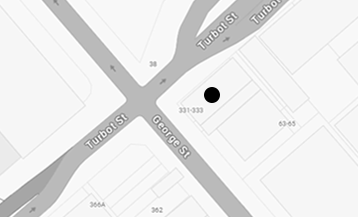
On 6 March 2024, the Queensland Parliament passed the Criminal Law (Coercive Control and Affirmative Consent) and Other Legislation Amendment Act 2024 [the Act]. Otherwise known as Hannah’s Law, the legislation aims to address the serious and ongoing rise of domestic violence offences. Particularly, the new law criminalises coercive control in Queensland with penalties of up to 14 years imprisonment.
What is Coercive Control?
Coercive control is a form of domestic violence characterised by a consistent pattern of behaviour that gradually strips a person of their autonomy and independence. This behaviour aims to create an environment where the victim lives in perpetual fear, isolation, intimidation, and humiliation.
Affirmative Consent
A significant aspect of the Act is its emphasis on affirmative consent in sexual assault cases. The legislation aims to clarify the meaning of consent, underscoring the necessity for active, ongoing, and freely given consent.
The Act stipulates that the prosecution must prove both that the complainant did not consent to the sexual activity and that the accused did not reasonably believe the complainant was consenting. This adjustment shifts the burden of proof, placing more responsibility on the accused to ensure that consent is obtained and maintained throughout the encounter.
Under the new laws, consent is defined as a “free and voluntary agreement.” Crucially, a person does not consent if they do not “say or do anything to communicate consent.” This affirmative consent model requires that agreement to each sexual act must be actively communicated. Both parties must verbally or physically indicate their willingness to proceed and continuously ensure mutual consent.
The legislation also tightens the use of the “mistake of fact” defence in rape and sexual assault cases. Previously, defendants could argue they believed the other person consented based on irrelevant factors, such as clothing or lack of resistance. Now, a belief in consent is only deemed reasonable if the accused took active steps to verify their partner’s consent.
These provisions aim to establish clearer guidelines and raise the standard for lawful consent, thereby offering better protection for victims of sexual assault and ensuring perpetrators are held accountable.
What to Do When Charged with Coercive Control
Navigating the complexities of the Criminal Law (Coercive Control and Affirmative Consent) and Other Legislation Amendment Act 2024 can be daunting. It is highly advisable to consult with an experienced criminal defence lawyer such as ours to help you understand and prepare for every legal procedure in your defence.
A person charged with coercive control can mount a defence by demonstrating that their conduct was reasonable within the context of the entire relationship. This defence obliges the defendant to show that their actions, when viewed in the context of the relationship as a whole, were reasonable. This means considering the broader dynamics and nature of the relationship, rather than focusing on individual acts in isolation.
Therefore, the defendant must provide evidence that supports the reasonableness of their behaviour throughout the relationship. The court will consider various factors, such as the intentions behind the actions, the nature of the interactions, and the overall circumstances of the relationship. It is important to note that this defence does not apply if the defendant believed any single act of domestic violence was reasonable when viewed in isolation; instead, the entire pattern of behaviour must be considered reasonable.
This defence shifts the burden of proof to the defendant, who must convince the court or jury that their conduct was justifiable given the relationship’s context. The court will evaluate all relevant evidence, including communication records, witness testimonies, and expert opinions, to determine whether the behaviour was indeed reasonable
Implications and Challenges
The Act 2024 significantly reshapes the legal framework in Queensland. It advances the recognition of the complex and often subtle nature of domestic violence, especially in cases involving coercive control.
However, implementing these new laws poses several challenges. One primary issue is the difficulty in proving coercive control in court, as it typically involves a pattern of behaviour that might not be easily documented or witnessed by third parties. This can make it hard for the prosecution to provide concrete evidence, complicating the legal process.
Additionally, there are concerns about the potential for misuse or overuse of the coercive control offence. There is a risk that behaviours not rising to the level of criminal conduct could be unfairly prosecuted. To mitigate these risks, comprehensive training for law enforcement and the judiciary on recognizing and responding to coercive control is essential. This training will help ensure the laws are applied fairly and effectively.
Ramifications for the Defence
- Increased Burden of Proof: Defendants will need to prepare for the possibility that behaviours previously not considered criminal could now be scrutinised under the new definitions. They may need to provide evidence or testimony to counter claims of coercive control, which can be challenging given the often private and subtle nature of such behaviours.
- Documentation and Evidence: The defence will likely need to focus on the context and intention behind the behaviours in question. Gathering documentation, witness testimonies, and expert opinions will be crucial in demonstrating that the actions were reasonable and not intended to coerce or control.
- Legal Strategy: Defence lawyers will need to develop new strategies to address these charges. This could involve detailed cross-examinations of the complainant’s claims, the strategic use of expert testimony, and presenting evidence of the defendant’s perspective and context.
Conclusion
The Criminal Law (Coercive Control and Affirmative Consent) and Other Legislation Amendment Act 2024 aims to protect victims of domestic violence more effectively. However, there are some concerns about its misuse and overuse. Successfully defending against coercive control charges under the new legislation demands a nuanced and evidence-based strategy that effectively challenges the prosecution’s narrative and provides a compelling alternative explanation for the defendant’s behaviour.
Contact us
Navigating Hannah’s Law whilst being charged with coercive control can be challenging. Seeking the guidance of experienced Criminal Defence Lawyers such as ours is crucial to presenting your case in the most effective manner possible. Contact one of our expert team at Hannay Lawyers today if you have any questions or concerns about coercive control charges.





